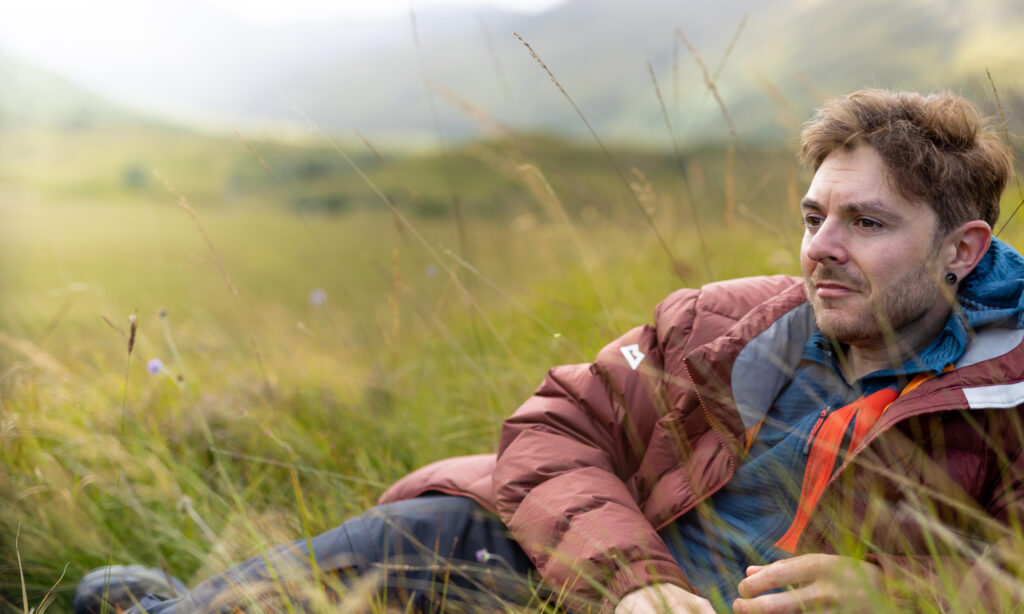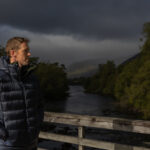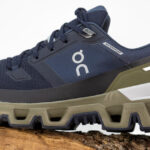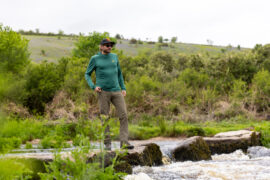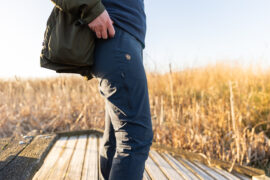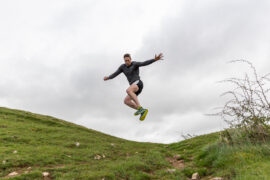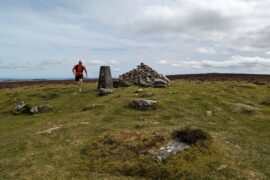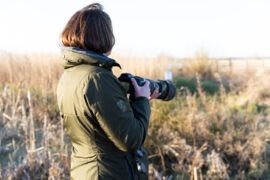Follow Tom from our Bristol shop as he takes on ME’s classic puffy down jacket and gives his thoughts.
…
On our recent staff trip to Scotland, back in September, I had the opportunity to put the Mountain Equipment Lightline jacket to the test. The Lightline is a down-insulated jacket that balances warmth with good technical features, durability, and price. It’s a jacket that has been a best-seller in the Mountain Equipment for many years and will keep you warm in sub-zero conditions and last for many years to come. In terms of warmth, this jacket is one of the warmer jackets in their range and, whilst they do make warmer jackets, this is certainly one of their more affordable and durable jackets. Using it on the Scottish Highland’s Affric Kintail Way multi-day walk gave me the opportunity to properly test the jacket’s features and gave me a good idea of the level of insulation it offers. Before we look at the jacket in more detail, let’s have a quick look at one question we regularly hear: “Why buy a down-insulated instead of a synthetic insulated jacket?” One of the main advantages of down is that it offers an impressive warmth-to-weight ratio; by providing insulation by lofting and trapping air. It’s also extremely compressible. This allows jackets to offer high levels of insulation at lower weights and smaller pack sizes and down also tends to last longer than synthetic alternatives. The only downside is that, if the down filling itself gets wet, it doesn’t insulate very well and is slower to dry out than many synthetic alternatives.
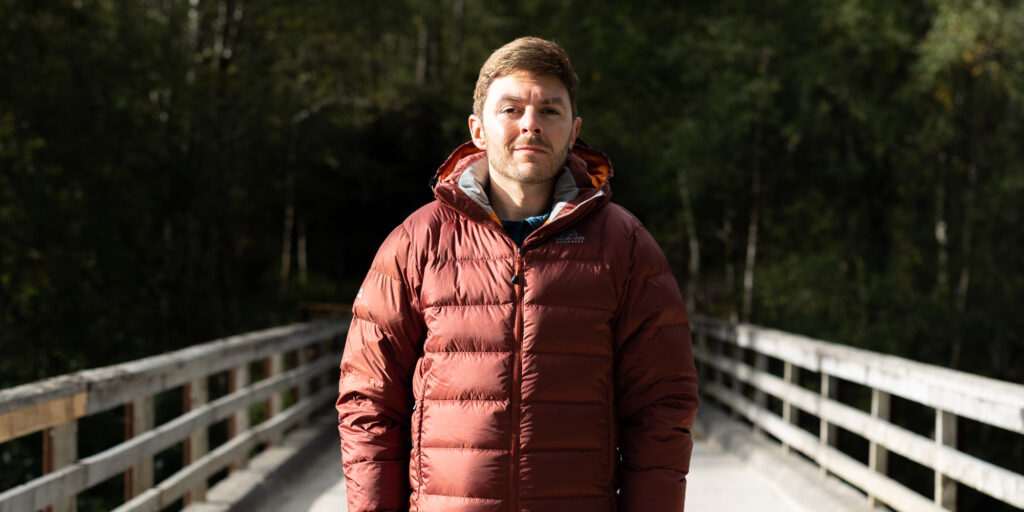
Mountain Equipment is committed to sustainability, quality, and reducing risks to animal welfare. Their Down Codex, first created back in 2009, allows you to see the whole history of the down in each of their down products, including the origin, exact fill content, and audit history of the supply chain. This gives end consumers access to more information and evidence than the Responsible Down Standard (RDS) that you may be familiar with and shows a fantastic commitment to ethical and environmentally sustainable standards.
Each Mountain Equipment down product comes with a Down Codex label containing a 12-digit code. This code can be entered on their Down Codex website to track them down from its source. I entered the code on my jacket and could see that the down fill came from the Jiangxi Province in North-Eastern China, with a content of 91% 700 fill power down clusters. This is just over the specified minimum 90/10 down/feather content.
The Mountain Equipment Lightline jacket has a 40 dernier DRILITE Loft outer which is totally windproof, highly water resistant, and highly durable. It has a zip-off hood with simple but effective foam adjusters on pull cords at each side and a velcro adjuster on the back for adjusting volume. The hood fits extremely well and accommodates a helmet well enough, although you may find that it is very slightly restrictive with a larger climbing helmet; this hasn’t been a problem for me at all though. The jacket has a very protective collar, with a soft internal lining that doesn’t catch on facial hair, which looks great when the hood is removed and fills space behind the neck with the hood attached, to give a warm and cosy feel. The Lightline has a high-quality 2-way YKK central zip, which allows the jacket to be used over a harness without interfering with belaying, and a rear insulated baffle to minimise heat loss. The arms are articulated with clever baffle construction to enable freedom of movement and the cuffs are elasticated with velcro adjustments that seal nicely over gloves. There are pull-cord adjustments on the hem at each side to customise fit and reduce heat loss, an inner zipped security pocket that’s perfect for storing a phone and the included stuff sack, and two hand-warmer pockets that are well insulated and large enough to fit your hat, gloves, headtorch, and some snacks too.
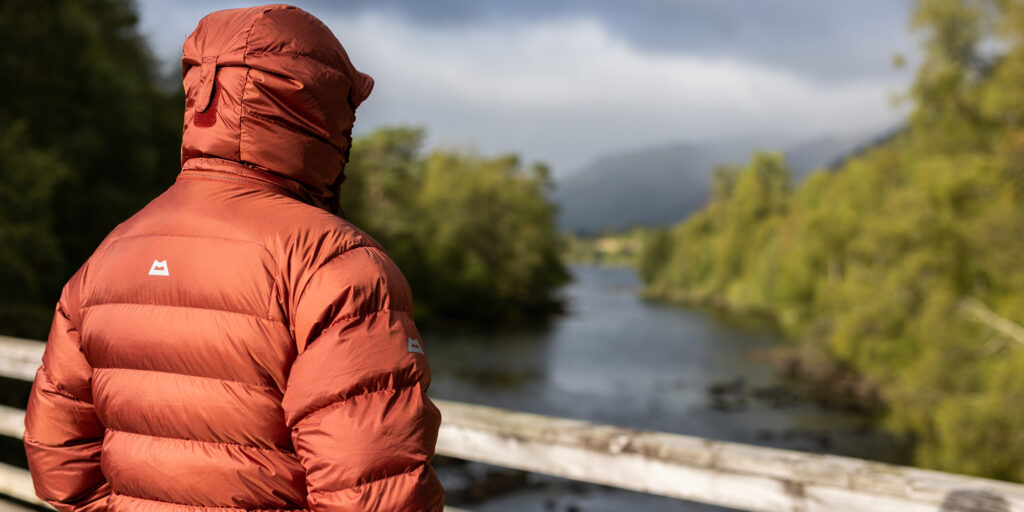
I received the Lightline jacket in the medium size and Fired Brick colour. A colour that looks great on colder days in the city as well as on the hill. I have a fairly slim build and found that the medium size is perfect for me. I have enough room for it to fit over thicker mid-layers and a waterproof, without feeling like it’s too loose if I put it on over only a t-shirt. It’s also long enough to keep my backside warm and doesn’t expose the top of my trousers when I lift my arms. This jacket has quite a lot of loft but it just about fits under my Saltoro waterproof jacket without being compressed and compromising its insulation. However, if you find yourself between sizes in the Lightline, and want to fit thicker layers underneath, then it may be a good idea to opt for the larger size.
Mountain Equipment quotes the jacket weight as 740g, which seems to be the weight for a size small. My medium jacket weighed 765g on the kitchen scales, with the hood accounting for just over 90g of the overall weight, and a stuff sack at just under 20g. The jacket has stitched-through baffle construction with 296g of 700 fill power down in size large.
Testing the jacket in Scotland, and on many colder evenings since, I found that it was certainly very warm. We had temperatures roughly between 0 – 10°C in the Highlands and I rarely zipped the jacket up completely. It certainly performs well enough for temperatures approaching -10°C and felt almost luxuriously cozy at lunchtime stops and in the evenings at the camp. It was the first thing I reached for when I woke up and, with a soft internal lining, it made a good makeshift pillow when stuffed into its hood.
I would highly recommend this jacket to anyone looking for a high-quality down insulated jacket, for colder conditions, that offers exceptional protection from wind, snow, and even the odd shower. Whether it’s for lunchtime stops on winter walks, cold evenings at the camp, or bouldering and regular visits to the crag, the Lightline will last for many years and won’t break the bank either. This is a workhorse of a jacket that, whilst not as light and packable as some alternatives, is definitely durable enough for everyday use and more technical use where longevity is a priority.

